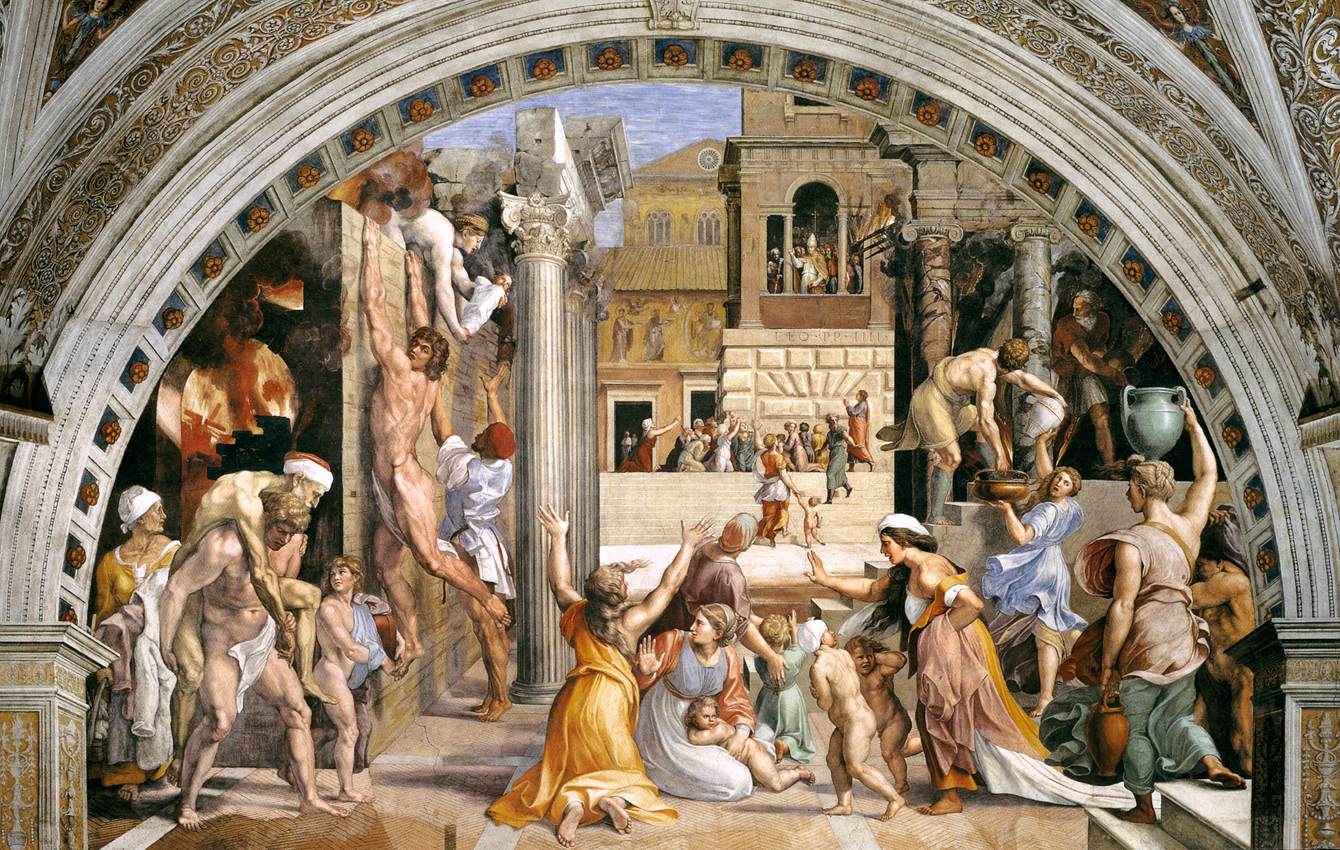The Fire in the Borgo
Story
The Fire in the Borgo is the most complex of the four episodes in the Stanza dell'Incendio di Borgo. It is full of references to classical antiquity, to medieval architecture at the time of the affirmation of the Church, and to themes used by contemporary artists. It celebrates the intercession of Leo IV, by whose grace a fire which spread through the Borgo, a popular section of Rome near the Basilica of St Peter, was extinguished. The event depicted happened in AD 847 and is documented in the "Liber Pontificalis" (a collection of early papal biographies). Pope Leo IV managed miraculously to halt the raging fire, which was threatening an area of the city, by his benediction from the loggia of Old St Peter's.
The structure of the composition is complex: two colonnades of clear classical derivation define a square. The Pope, who again bears the features of Leo X, blesses the frightened crowd from a gallery located beyond the colonnades. The façade of old St Peter's appears behind him, in the background. While those in the foreground are desperately trying to put out the fire, the female figure in yellow with her back to us is begging them to look at the only effective source of help, the pope.
The term `scenographic' can appropriately be applied to this painting. Clearly, Raphael was concentrating on richer, more varied, but less harmonious compositional solutions than those of his previous paintings. The figure groups express great formal beauty, but they lack harmonious relationships and remain pure examples of episodical representation. The group in the left foreground, for example (made up of an old man on the shoulders of a young man, and a child), may be drawn from the episode of the Aeneid in which Aeneas escapes with his father, Anchises and his son, Ascanius. The woman with children in the centre of the fresco and the water carrier at right, whose clothes blow in the wind, represent similar stereotypes. The nude descending from the wall at left recalls the heroic figures of Michelangelo. Notwithstanding these limitations, the scene is highly effective and demonstrates Raphael's skill as an illustrator, although, as the critics maintain, it was executed largely by his pupils.
